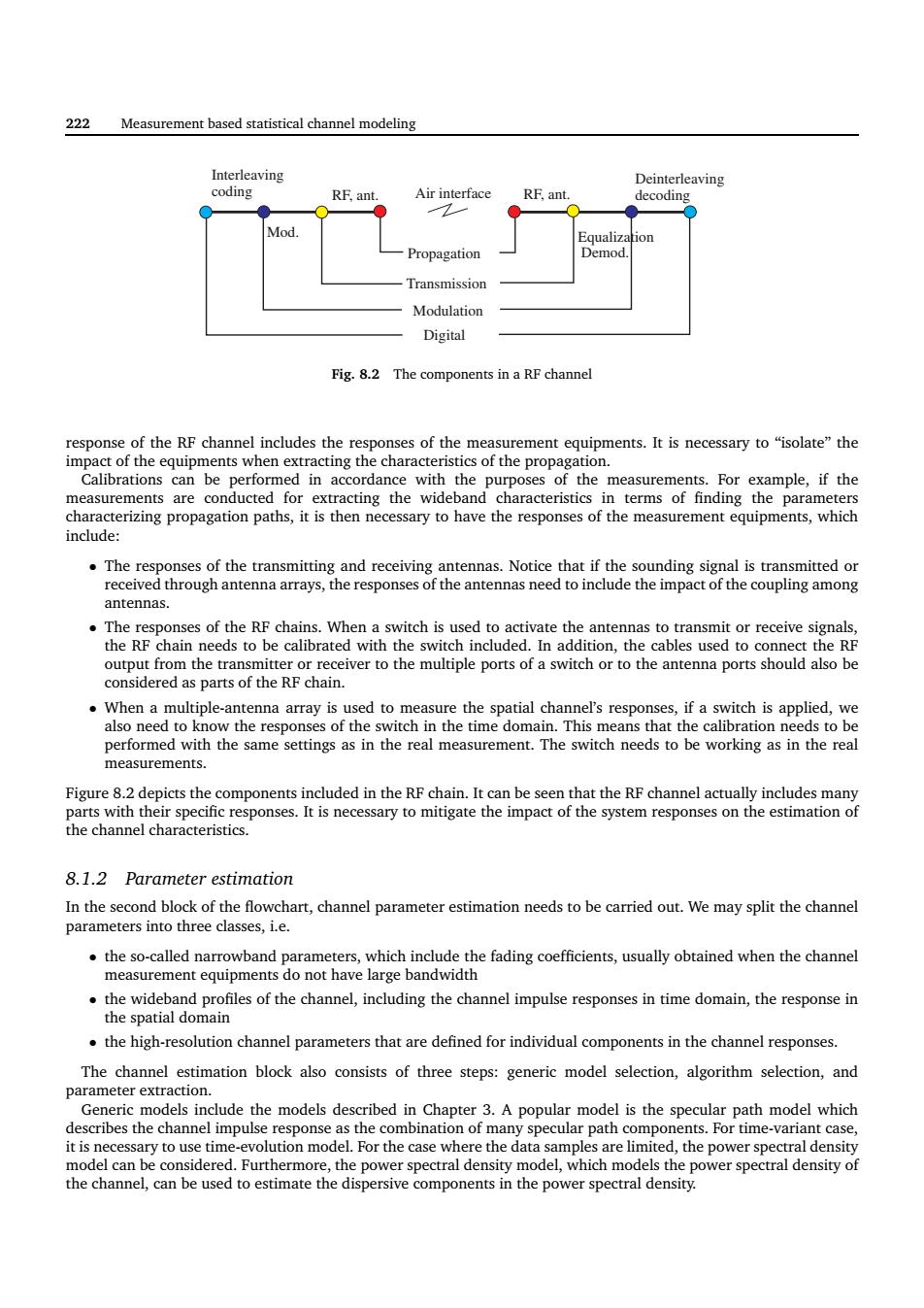正在加载图片...

222 Measurement based statistical channel modeling RF,an Mod. io Propagation Modulation Digital Fig.8.2 The components in a RF channe Calibrations can be performed in accordance with the purp osesof the measurements.For example,if the indlude responses o coupling among nas The the RF chain he the mese安gsneaaneoeaagsne It an he 8 1 2 Parameter estimation .the so-called narrowband parameters,which include the fading coefficients,usually obtained when the channel measurement equipments do not have large bandwidth theeding he ane oedo e the high-resolution channel parameters that are defined for individual components in the channel responses. The channel estimation block also consists of three steps:generic model selection,algorithm selection,and parameter extraction. Generic models include the models described in Chapter 3.A popular model is the specular path model which yolution model For the case 222 Measurement based statistical channel modeling Propagation Transmission Modulation Digital RF, ant. Mod. Demod. Equalization Interleaving coding Deinterleaving Air interface RF, ant. decoding Fig. 8.2 The components in a RF channel response of the RF channel includes the responses of the measurement equipments. It is necessary to “isolate” the impact of the equipments when extracting the characteristics of the propagation. Calibrations can be performed in accordance with the purposes of the measurements. For example, if the measurements are conducted for extracting the wideband characteristics in terms of finding the parameters characterizing propagation paths, it is then necessary to have the responses of the measurement equipments, which include: • The responses of the transmitting and receiving antennas. Notice that if the sounding signal is transmitted or received through antenna arrays, the responses of the antennas need to include the impact of the coupling among antennas. • The responses of the RF chains. When a switch is used to activate the antennas to transmit or receive signals, the RF chain needs to be calibrated with the switch included. In addition, the cables used to connect the RF output from the transmitter or receiver to the multiple ports of a switch or to the antenna ports should also be considered as parts of the RF chain. • When a multiple-antenna array is used to measure the spatial channel’s responses, if a switch is applied, we also need to know the responses of the switch in the time domain. This means that the calibration needs to be performed with the same settings as in the real measurement. The switch needs to be working as in the real measurements. Figure 8.2 depicts the components included in the RF chain. It can be seen that the RF channel actually includes many parts with their specific responses. It is necessary to mitigate the impact of the system responses on the estimation of the channel characteristics. 8.1.2 Parameter estimation In the second block of the flowchart, channel parameter estimation needs to be carried out. We may split the channel parameters into three classes, i.e. • the so-called narrowband parameters, which include the fading coefficients, usually obtained when the channel measurement equipments do not have large bandwidth • the wideband profiles of the channel, including the channel impulse responses in time domain, the response in the spatial domain • the high-resolution channel parameters that are defined for individual components in the channel responses. The channel estimation block also consists of three steps: generic model selection, algorithm selection, and parameter extraction. Generic models include the models described in Chapter 3. A popular model is the specular path model which describes the channel impulse response as the combination of many specular path components. For time-variant case, it is necessary to use time-evolution model. For the case where the data samples are limited, the power spectral density model can be considered. Furthermore, the power spectral density model, which models the power spectral density of the channel, can be used to estimate the dispersive components in the power spectral density